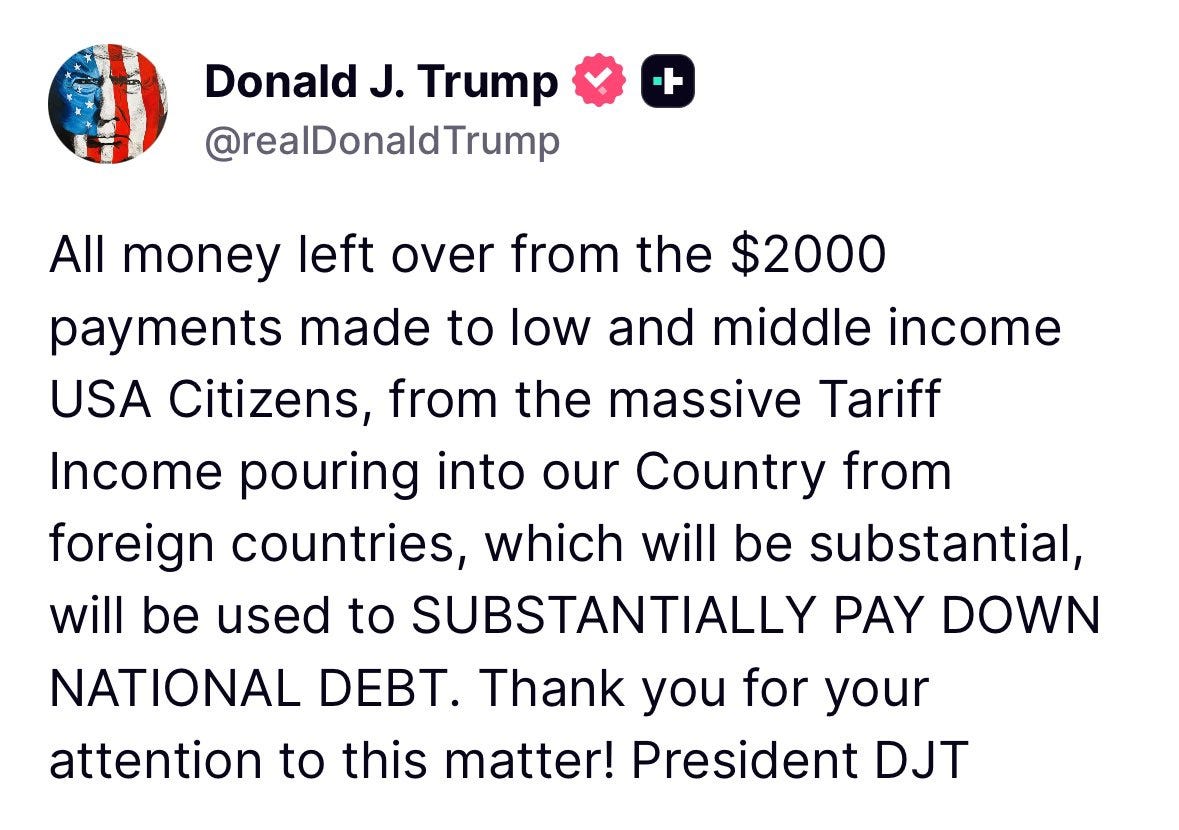President Trump's Tariff Proposal: U.S. Dividends, Debt Reduction, Proposed Payouts To American Citizens and Global Trade Reactions
Tariff proceeds would deliver prompt financial assistance to households while tackling enduring fiscal issues, such as the national debt surpassing $37.64 trillion.
UNITED STATES — U.S. President Donald Trump announced on November 10 a proposal to allocate tariff revenues from foreign imports as direct dividends of at least $2,000 to low- and middle-income U.S. citizens, directing any surplus toward national debt reduction, amid a wave of international reactions from allies and competitors alike.
This measure aligns with his economic strategy focused on reciprocal trade to rectify international commercial imbalances, drawing responses ranging from retaliatory measures to diplomatic overtures.
Tariff proceeds would deliver prompt financial assistance to households while tackling enduring fiscal issues, such as the national debt surpassing $37.64 trillion, even as global partners voice concerns over potential escalations.
The proposal stems from Trump’s statement on Truth Social, lacking formal legislative outlines to date, yet prompting immediate commentary from foreign ministries.
Examination of associated policy materials reveals consistency with earlier pledges for baseline import tariffs, which could produce considerable revenue, although congressional endorsement and economic assessments remain essential for execution, with international dynamics adding layers of complexity.




